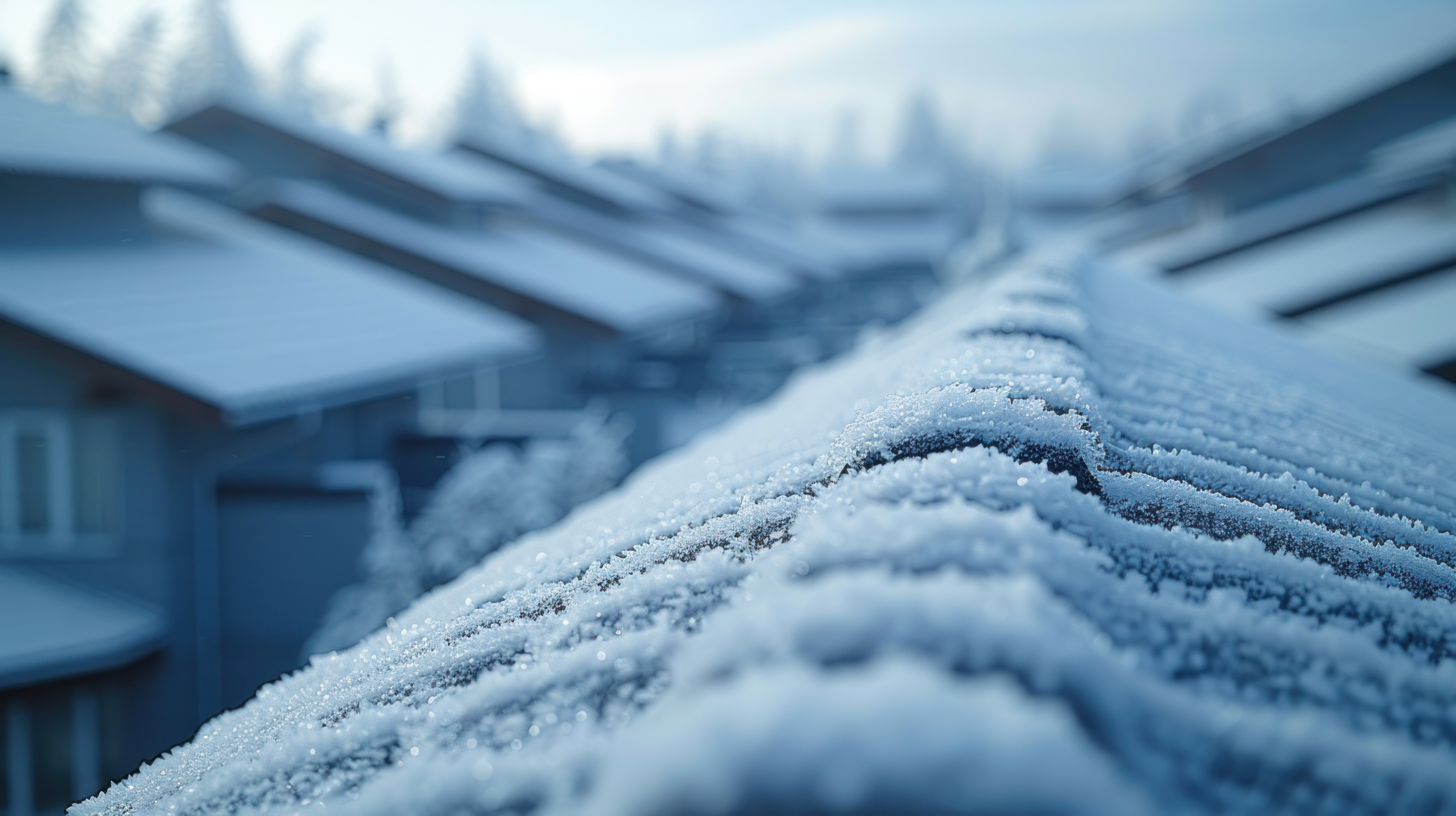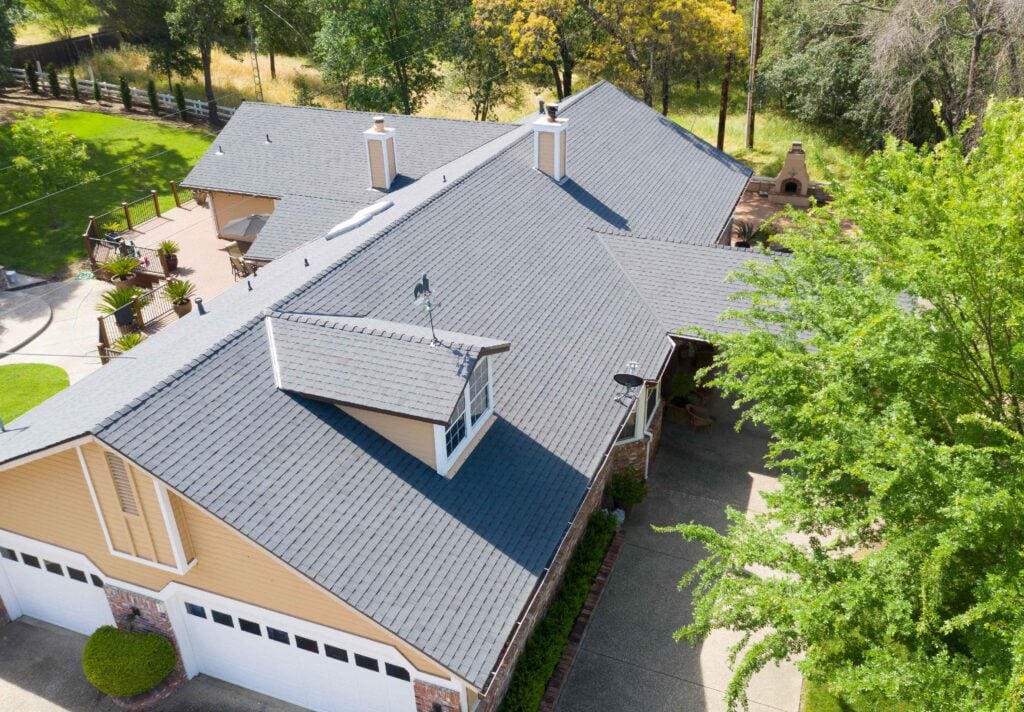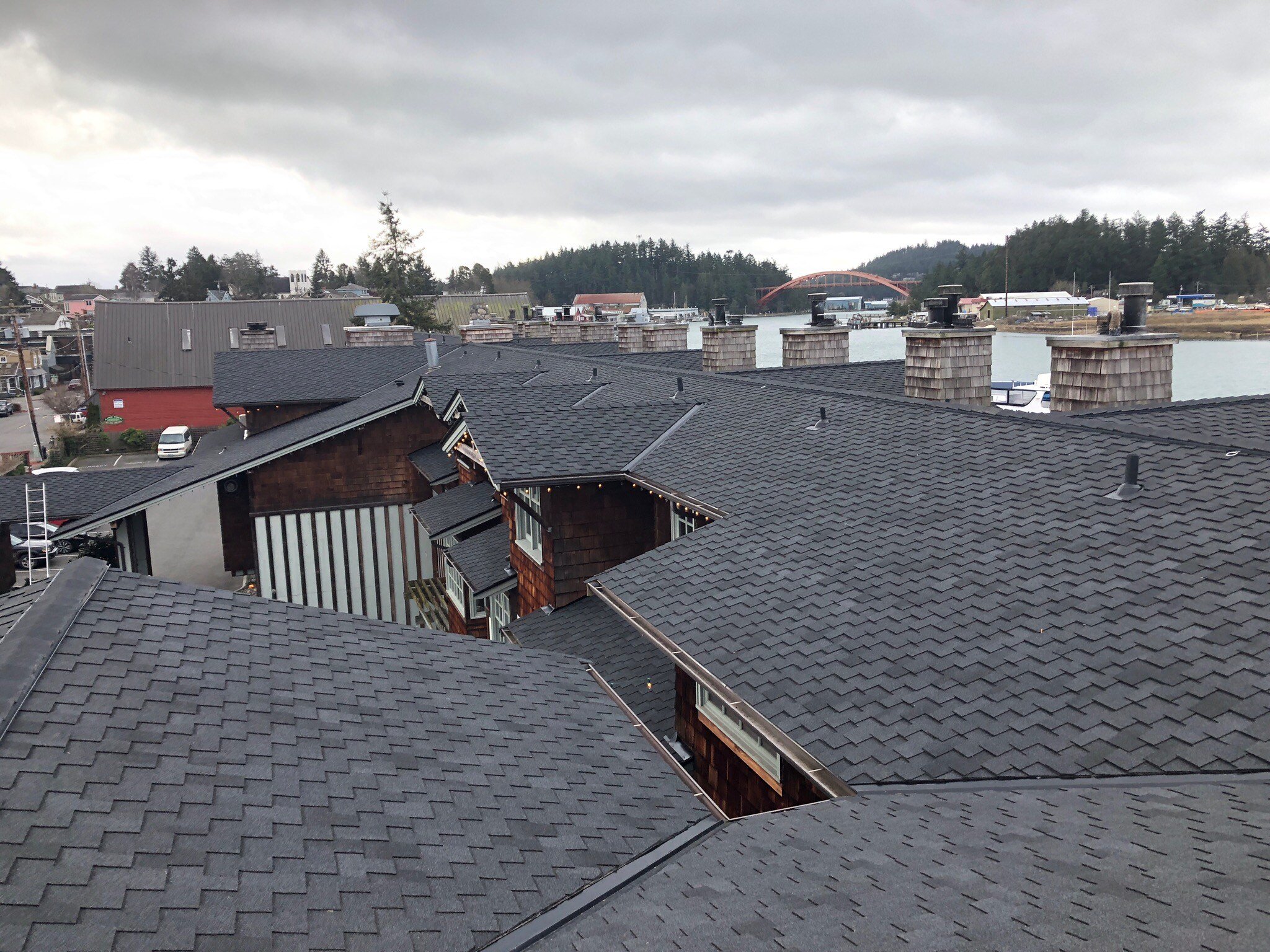Can asphalt shingles be installed in cold weather?

Asphalt shingles can be successfully installed in colder weather with proper planning and execution.
A common question among homeowners is, “At what temperature can asphalt shingles be installed?” While asphalt shingles are a versatile and durable roofing option, the temperature at the time of installation plays a critical role in ensuring a long-lasting roofing system. Let’s explore some key considerations for cold-weather installation and how you can work with your contractor to make informed decisions when replacing your roof.
The ideal temperature for installation
The roofing industry generally recommends that asphalt shingles be installed when the temperature is at least 40° Fahrenheit (F). However, some contractors prefer not to install shingles unless the temperature exceeds 50° F. This preference often depends on other factors, including:
- Whether the roof is mostly shaded during the day
- The number of consecutive cold days before and after the date of installation
- General weather conditions in the area
In addition to starting with a temperature of 40° F or higher, it’s crucial that temperatures continue to rise or remain stable for several days following installation. This is because shingles require warm temperatures over a period of time to properly adhere to the roof deck.
Why temperature matters
Asphalt shingles have a self-sealing adhesive that activates with heat, allowing the shingles to adhere securely to the roof. If the weather is too cold or temperatures drop shortly after installation, shingles may not seal properly. This can lead to issues such as:
.jpeg?width=414&height=276&name=AdobeStock_372781784%20(1).jpeg) Adhesion delays: Shingles may not adhere evenly across the roof. Shingles on the north side of the house, in particular, may take longer to fully seal.
Adhesion delays: Shingles may not adhere evenly across the roof. Shingles on the north side of the house, in particular, may take longer to fully seal.
- Debris complications: Dirt or debris can get under shingles before they seal, increasing the risk of blow-offs in the future.
- Material brittleness: Cold temperatures can make shingles stiff and more prone to cracking or breaking, especially if they’ve been exposed to freezing conditions.
- Safety risks for contractors: Cold weather can create slippery surfaces, increasing the risk of slips and falls during installation.
Best practices for cold-weather installation
While asphalt shingles have been successfully installed in cold climates for over a century, contractors must follow specific guidelines to ensure quality and durability. Here are some tips they keep in mind:
- Proper storage: Shingles should be stored in a warm, flat location until they are ready to be installed. Prolonged exposure to cold temperatures can affect their performance.
- Flat roofing surface: The roof deck should be smooth and flat to promote proper adhesion.
- Adequate ventilation: The attic space beneath the roof should be well-ventilated to maintain consistent temperatures and prevent moisture buildup.
- Manufacturer recommendations: Manufacturers always provide installation guidelines for their products to ensure the shingles perform as intended.
Collaborate with your roofing contractor
 As a homeowner, you play an important role in the roofing process. Open communication with your contractor is key to a successful installation. Discuss the following:
As a homeowner, you play an important role in the roofing process. Open communication with your contractor is key to a successful installation. Discuss the following:
- Weather conditions: Does the contractor feel confident that the weather meets the ideal conditions for installation?
- Timing: Especially during colder months, ask about strategies to mitigate potential issues.
- Sealing confidence: Ensure your contractor is comfortable with the conditions and confident in the shingles’ ability to seal properly.
A well-informed homeowner is the foundation of a durable, long-lasting roof. Work together with your roofing contractor to choose the right timing for your roof replacement and ensure your roof performs for years.


